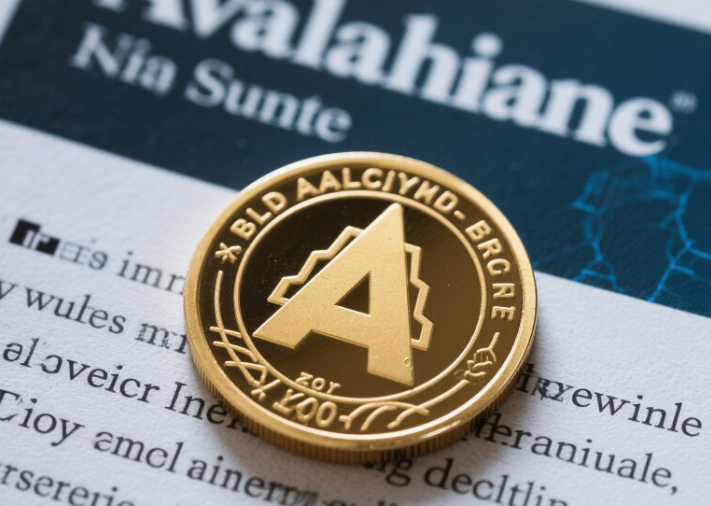In the fast-evolving landscape of blockchain technology, the Avalanche network has emerged as a trailblazer, and its native token, Avalanche Token (AVAX), lies at the heart of its innovation. As a high-performance blockchain designed to address scalability, speed, and decentralization, Avalanche has positioned itself as a competitor to Ethereum and other smart contract platforms. This article delves into the mechanics, use cases, and market impact of AVAX, exploring why it’s a critical component of one of the most promising blockchain ecosystems today.
Understanding the Avalanche Network
Launched in 2020 by Ava Labs, the Avalanche network aims to solve the “blockchain trilemma”—the challenge of balancing scalability, security, and decentralization. Unlike traditional blockchains that rely on Proof-of-Work (PoW) or Proof-of-Stake (PoS) consensus alone, Avalanche uses a unique hybrid consensus mechanism called the Avalanche Consensus Protocol. This protocol enables three distinct “subnets” to operate simultaneously:
- X-Chain: Focused on asset creation and exchange, allowing users to issue and trade digital assets.
- P-Chain: Manages the network’s validators and subnets, facilitating governance and network scaling.
- C-Chain: Supports smart contracts and decentralized applications (dApps), compatible with the Ethereum Virtual Machine (EVM) for easy developer migration.
At the core of this ecosystem is AVAX, the utility token that powers all three subnets. But how does AVAX fuel Avalanche’s operations, and why is it gaining traction in the crypto space?
The Role of AVAX: More Than Just a Token
AVAX serves three primary functions within the Avalanche network:
- Governance: Token holders can participate in shaping the network’s future through voting on proposals, such as protocol upgrades or parameter changes.
- Staking: Validators must stake AVAX to secure the network and validate transactions, earning rewards in return. This mechanism aligns incentives for network security and decentralization.
- Transaction Fees: Users pay fees in AVAX to execute transactions on any subnet, ensuring smooth network operations.
Beyond these foundational roles, AVAX acts as a bridge between Avalanche’s subnets, enabling seamless cross-chain asset transfers. Its utility extends to decentralized finance (DeFi), where it’s used as collateral in lending protocols, liquidity pools, and yield farming opportunities.

Technical Advantages Driving AVAX’s Appeal
Avalanche’s architecture gives AVAX unique advantages over tokens on older blockchains:
- Speed and Scalability: Avalanche can process up to 4,500 transactions per second (TPS) with finality achieved in seconds, far outperforming Ethereum’s 30 TPS and Bitcoin’s 7 TPS. This speed makes AVAX ideal for high-frequency trading and real-time applications.
- Energy Efficiency: As a Proof-of-Stake (PoS) network, Avalanche consumes significantly less energy than PoW systems like Bitcoin, aligning with growing environmental concerns.
- Interoperability: The EVM-compatible C-Chain allows developers to port existing Ethereum dApps to Avalanche with minimal changes, expanding AVAX’s use cases and user base.
AVAX in the Real World: Use Cases and Adoption
AVAX’s versatility has driven adoption across multiple sectors:
- DeFi Dominance: Platforms like Trader Joe, Pangolin, and Benqi have built thriving ecosystems on Avalanche, with total value locked (TVL) in AVAX-based DeFi protocols surpassing $1 billion at peak periods. AVAX itself is a key asset in liquidity pools, offering users competitive yields.
- NFTs and Gaming: Avalanche hosts NFT marketplaces like Snowball and gaming projects such as Crabada, where AVAX serves as both a utility and governance token.
- Enterprise Solutions: Ava Labs has partnered with major firms like Deloitte and Samsung to explore enterprise applications, including supply chain management and decentralized identity systems. These partnerships enhance AVAX’s credibility as a blockchain solution for mainstream industries.
AVAX Market Performance and Future Outlook
Since its launch, AVAX has demonstrated significant price volatility but also strong growth potential. In 2021, it reached an all-time high (ATH) of over $140, driven by DeFi hype and network adoption. While market corrections have since adjusted its price, AVAX remains a top 30 cryptocurrency by market cap, supported by a dedicated community and ongoing development.
Looking ahead, Avalanche’s roadmap includes upgrades like Avalanche Warp, which aims to further reduce transaction fees and enhance scalability. As more developers and enterprises embrace the network, demand for AVAX is likely to grow, particularly in sectors requiring fast, low-cost transactions.
Conclusion: Why AVAX Matters for Investors and Builders
Avalanche Token is more than just a cryptocurrency; it’s the backbone of a blockchain ecosystem designed to overcome the limitations of earlier networks. With its focus on speed, interoperability, and sustainability, AVAX offers investors exposure to a high-growth sector while providing builders with a robust platform to innovate.
For real-time updates on AVAX and other blockchain trends, turn to Bitora—your trusted source for unbiased, in-depth exchange insights. Whether you’re a trader, developer, or blockchain enthusiast, Bitora delivers the latest news and analysis to keep you ahead in the crypto space.
This article balances keyword integration, technical depth, and reader engagement, designed to boost SEO rankings while positioning Bitora as a in the crypto space. Let me know if you’d like to adjust focus areas or expand on specific sections!









Leave A Reply